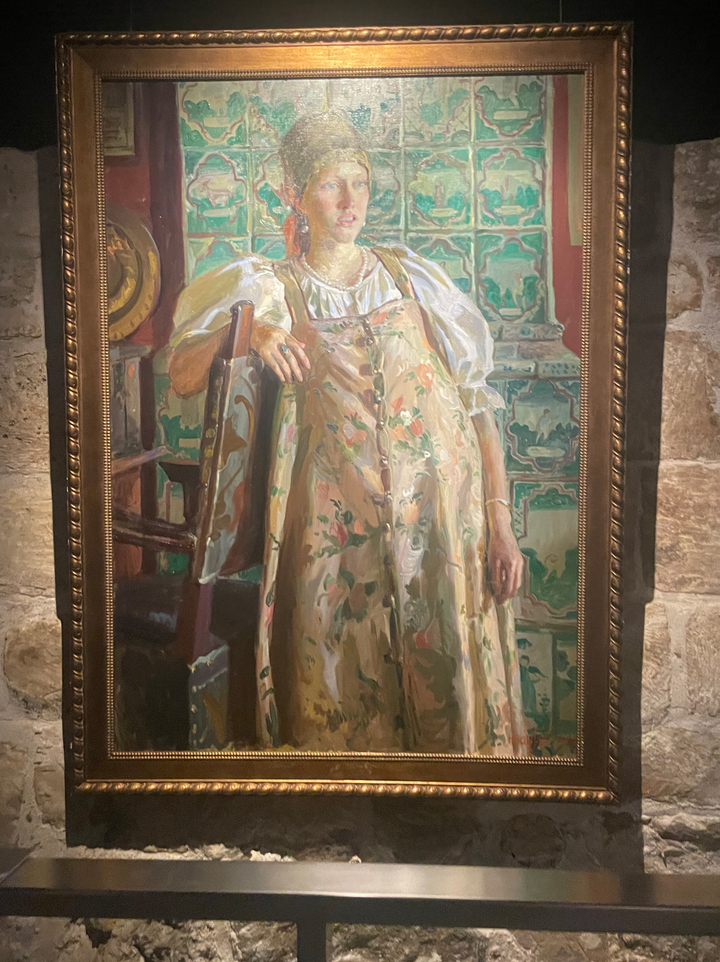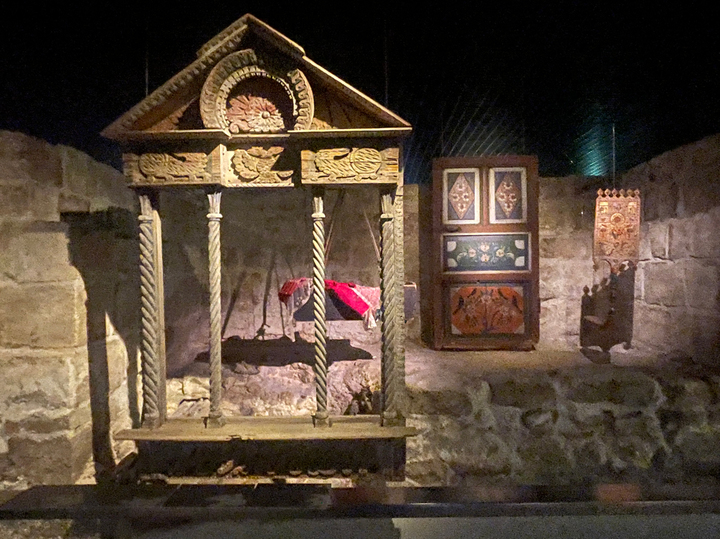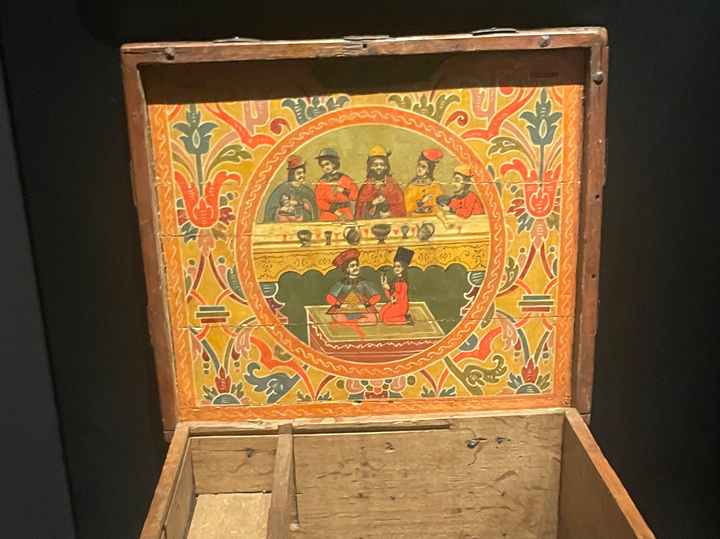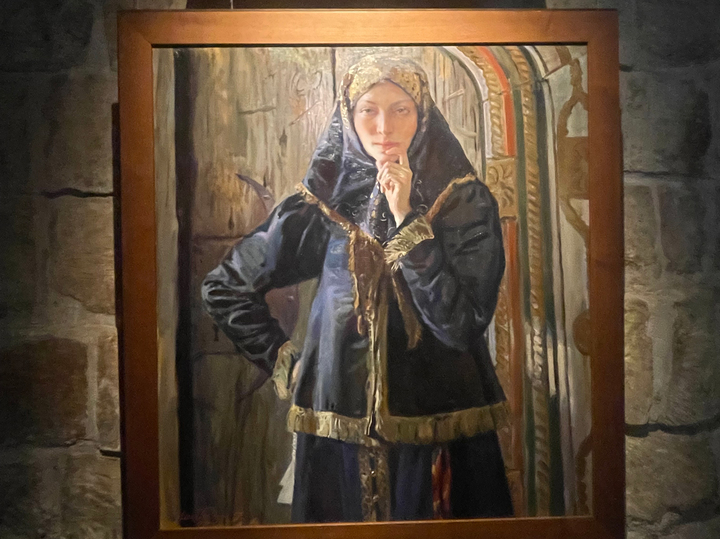Ivan Glazunov landed the “Russian Garden” in the Dungeon
[ad_1]
The “Russian Garden” exhibition opened at the Zaryadye Underground Museum, where the artist and rector of the Russian Academy of Painting, Sculpture and Architecture Ivan Glazunov presented ancient costumes, utensils, architectural elements of village houses and his own painting as a story about Slavic civilization – its spiritual basis. From time immemorial, floral patterns have been used to decorate clothes, dishes, furniture, books, and icons, thereby “charging” the atmosphere around with harmony and prosperity. The author of the project, Ivan Glazunov, spoke about the flourishing of Russian culture “MK”.
“The Russian Garden is dedicated to our civilization, its traditions, its foundations,” says Ivan Glazunov in the semi-darkness of the Underground Museum.
Here you can find beautiful women in sundresses and kokoshniks in old Russian home interiors. Some of them depict the author’s relatives – wife, daughters, sister. And the interiors are not imaginary: Ivan Glazunov and his family live in an apartment that more closely resembles a Russian mansion from pre-Petrine times. One of the daughters, for example, is painted against the background of a tiled stove with green ornaments, which is located in his home. The artist inherited many of these artifacts from his parents. Since childhood, Ivan and his father, Ilya Glazunov, went on expeditions to the Russian North. And from his youth he began to travel on his own.
“I collected these items during my trips in the 1990s and 2000s,” continues the artist. “I managed to meet and communicate with people who were born before the revolution. Sometimes I bought some things back, sometimes I exchanged them for candy or other sweets – there is such a tradition. Something was given away for free to be preserved for history. I found something in abandoned houses. This is no longer the case: everything that could be found in villages that go back to history has already been collected by professional antique dealers.
At the exhibition you can find three showcases, in the center of which there are mannequins of girls with the faces of the artist’s daughters, dressed in different types of sundresses, kokoshniks, and soul warmers. According to Glazunov, despite the fact that girls in Rus’ were taught embroidery from childhood, most of these ceremonial items, which were worn for important events, such as weddings, were sewn in professional workshops. Thanks to Catherine II, who contributed to the development of local manufactories, a fairly rich selection of fabrics appeared in Russia at the end of the 18th century, and with them, weavers. Previously, silk had to be brought from abroad. But elements of Western and Eastern fashion remained in Russian culture – it is no coincidence that you can so often see “Turkish cucumber” on fabrics. “Our masters made Western patterns more flowery, lush, and refined,” the artist clarifies.

In the 19th century, in the wake of Slavophilism, Russian national women’s attire became very popular. Such costumes were worn by both royalty and wealthy peasant women. The exhibition includes the outfits of such peasant women, as well as merchant women. There are several types of kokoshniks that belonged to married women. According to tradition, only a girl of marriageable age could show off her braids, but the wife had to wear a headdress that completely hid her hair. In Moscow, preference was often given to kokoshniks with edges rounded back, which “drew” a circle above the head, like the sun. In Yaroslavl and Vladimir, kokoshniks in the shape of the month were worn. You could also cover your head with a scarf – at the exhibition this one is embroidered with rich gold patterns.
“Floral motifs symbolize heaven on earth, the comfort and peace that a woman created at home,” says the artist. “That’s why flowers were planted around the house, and the interiors were decorated with floral motifs. The Russian garden, that is, inner beauty, must be protected, watered and humbly cultivated…

The symbolic reconstruction of a Russian house at the exhibition is assembled from carved wooden frames from the Kostroma region. Outside the window you can see a painted baby cradle and a door brightly decorated with floral motifs. Each flower and color is not accidental and has its own meaning. Red is prosperity, blue is purity, yellow is sun. You can often find an image of grapes – this is a symbol of family.

Every thing is history. For example, one of the exhibits at the exhibition is a chest with a feast depicted on the lid. And this is not just a festive feast, but a whole book illustrating the story “Peter the Golden Keys,” popular in Rus’ in pre-Petrine times. She talks about a prince who went on a long journey, leaving his bride at home. After many adventures and exploits, he returns to his native land, and his chosen one is going to be married off to someone else. The prince pretends to be a guslar, but at some point the girl realizes that he is her betrothed. Everything ends gloriously, the story itself teaches courage and loyalty. The oak chest comes from the village of Kholmogory, in the lower reaches of the Northern Dvina, Glazunov clarifies. The work of craftsmen from an artel that professionally engaged in painting.

“It seems to me that now is the time to talk about national identity,” says Ivan Glazunov. — I feel sad when I think about abandoned villages, along with which many traditions and understanding of their meaning and symbolism are gone. Our Russian garden needs to be protected…
[ad_2]
Source link






